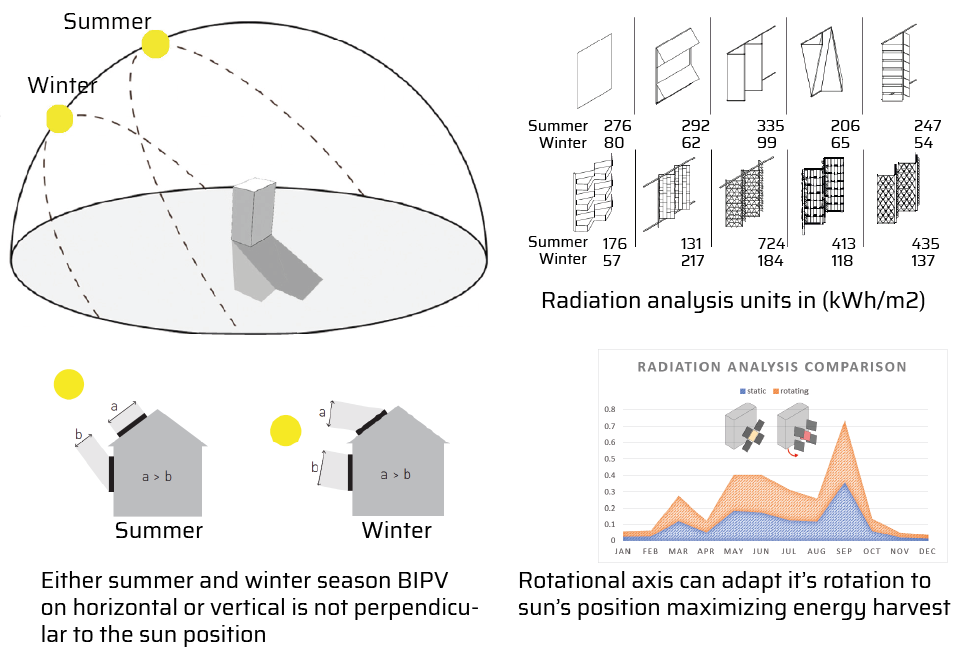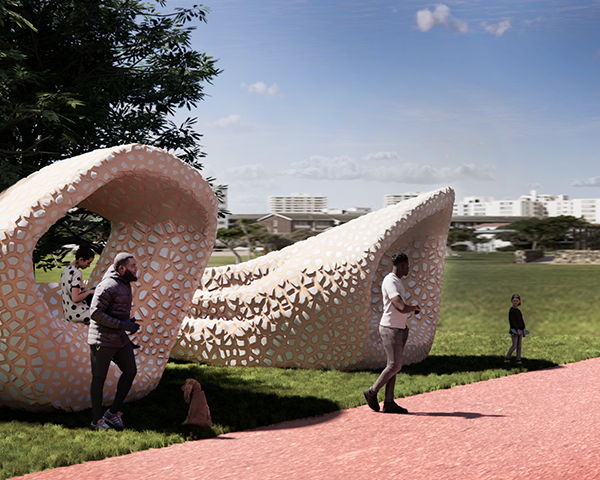OASTA PV panel
TU Delft Bucky lab design
Designing a PV product
integrating Grasshopper, Rhinoceros
OASTA PV is a facade panel that aims to achieve the transparent character while still harvesting enough direct sunlight and allow indirect light to enter inside. that can be applied to all building utilites such as hospitals, offices and schools.
For the PV modules, perpendicular alignment with the sun is required in order to operate at peak performance. Whereas, BIPV (Building-Integreated Photovoltaics) facade receives lower incident radiation relative to ground and rooftop installantions because of vertical installation.
An adaptive PV facade consist of solar tracking mechanism that imporoves the efficiency output by 70% and 40% compared to the horizontal fixed and fixed-tilt modules, respectively. A yearly comparison of total radiation is made, In December the efficiency is 46% increased in rotating one-axis tracking PV.
To counter the problem of orientation dual-axis trackers can be used, but the incorporation of dual-axis tracker in BIPV is very difficult and also costly, So, the issue can be dealt with creating a folding framework with solar trackers integrated within.

The most importatnt part of the design was how to set the angle with the sun, which is the biggest part of efficiency when generating solar power,
I developed a prototype of one-axisi rotating PV panel using computational methods in Ladybug and Firefly grasshopper plugin, with the input of EPW data files and timea and data of the observation
The initial plan was to make a 50*50cm 1-1 scale prototype, combining all three mechanism that developed at the first stage. This plan changed due to the corona policy. So we made the moving and rotating part separately to present the whole system with some handy materials.
